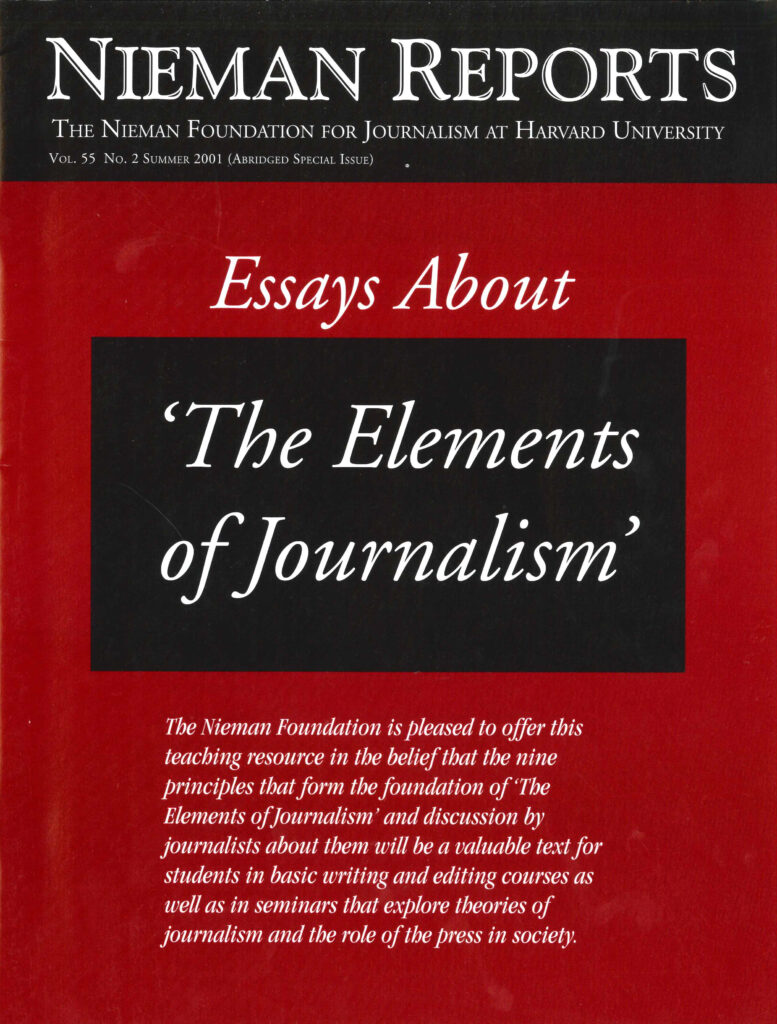“Journalism is our modern cartography. It creates a map for citizens to navigate society. This is its utility and its economic reason for being.... As with any map, journalism’s value depends on its completeness and proportionality. Journalists who devote far more time and space to a sensational trial or celebrity scandal than they know it deserves—because they think it will sell—are like cartographers who drew England and Spain the size of Greenland because it was popular. It may make short-term economic sense but it misleads the traveler and eventually destroys the credibility of the mapmaker. The journalist who writes what “she just knows to be true,” without really checking first, is like the artist who draws sea monsters in the distant corners of the New World....
Thinking of journalism as mapmaking helps us see that proportion and comprehensiveness are key to accuracy....
But as journalism companies aimed at elite demographics and cost efficiency, the industry as a general rule did not try [to reach more diverse audiences].... The concept of the mapmaker makes the error clear. We created a map for certain neighborhoods and not others. Those who were unable to navigate where they lived gave it up....
Proportion and comprehensiveness in news are subjective. Their elusiveness, however, does not mean they are any less important than the more objective roads and river feature of maps. To the contrary, striving for them is essential to journalism’s popularity—and financial health. It is also possible...to pursue proportion and comprehensiveness, despite their being subjective. A citizen and a journalist may differ over the choices made about what is important. But citizens can accept those differences if they are confident that the journalist is trying to make news judgments to serve what readers need and want. The key is citizens must believe the journalists’ choices are not exploitative—they are not simply offering what will sell—and that journalists aren’t pandering. Again, people care less whether journalists make mistakes, or correct them well, or always pick the right stories. The key element of credibility is the perceived motive of the journalist. People do not expect perfection. They do expect good intentions.... Concern for proportionality is a key way of demonstrating public interest motives.
...we need to stop using market research that treats our audience as customers, asking them which products they prefer. We need to create a journalism market research that approaches people as citizens and tells us more about their lives. How do you spend your time? Take us through your day. How long is your commute? What are you worried about? What do you hope and fear for your kids? [Give us] open-ended research on broad trends of interest. The kinds of questions that will allow editors to understand how to design a news package that is comprehensive and proportional to their community and their needs....”
Thinking of journalism as mapmaking helps us see that proportion and comprehensiveness are key to accuracy....
But as journalism companies aimed at elite demographics and cost efficiency, the industry as a general rule did not try [to reach more diverse audiences].... The concept of the mapmaker makes the error clear. We created a map for certain neighborhoods and not others. Those who were unable to navigate where they lived gave it up....
Proportion and comprehensiveness in news are subjective. Their elusiveness, however, does not mean they are any less important than the more objective roads and river feature of maps. To the contrary, striving for them is essential to journalism’s popularity—and financial health. It is also possible...to pursue proportion and comprehensiveness, despite their being subjective. A citizen and a journalist may differ over the choices made about what is important. But citizens can accept those differences if they are confident that the journalist is trying to make news judgments to serve what readers need and want. The key is citizens must believe the journalists’ choices are not exploitative—they are not simply offering what will sell—and that journalists aren’t pandering. Again, people care less whether journalists make mistakes, or correct them well, or always pick the right stories. The key element of credibility is the perceived motive of the journalist. People do not expect perfection. They do expect good intentions.... Concern for proportionality is a key way of demonstrating public interest motives.
...we need to stop using market research that treats our audience as customers, asking them which products they prefer. We need to create a journalism market research that approaches people as citizens and tells us more about their lives. How do you spend your time? Take us through your day. How long is your commute? What are you worried about? What do you hope and fear for your kids? [Give us] open-ended research on broad trends of interest. The kinds of questions that will allow editors to understand how to design a news package that is comprehensive and proportional to their community and their needs....”



